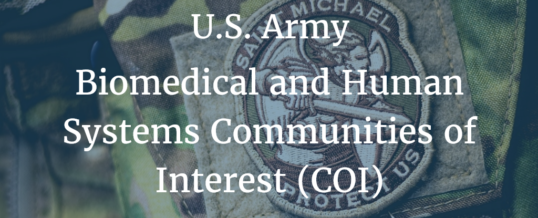
The Department of Defense (DoD) and other military assisting Federal Agencies have a large and diverse community of subject matter experts (SME) who are eager to collaborate with industry and universities. These extraordinary SMEs are driven to accelerate new and novel dual-use technologies forward to clinical and operational settings. There are thousands of healthcare providers in 167 DoD medical treatment facilities within the U.S. (43 Army MTFs); tens of thousands of researchers in the Defense Research Laboratories; twelve Federally Funded Research and Development Centers (FFRDC) and the 129 Federal Laboratory Consortium (FLC) laboratories; and numerous other locations that we will describe in future articles.
The U.S. Army has built a significant biomedical and human systems-focused R&D infrastructure. The DoD had a medical research portfolio of more than $1.7 billion in Fiscal Year (FY) 2015 according to the Defense Health Program (DHP) August 8, 2017 Report titled “Improving DHP Medical Research Processes.” The $1.7B amount is the total R&D, test, evaluation (i.e., Congressional Special Interest and core funding) and Clinical Investigations Program (CIP; $26.9 million intramural DHP operations and maintenance funding) for FY15. This does not include non-DoD extramural funds and the Defense Health Board was unable to ascertain total DHP medical research funding from Do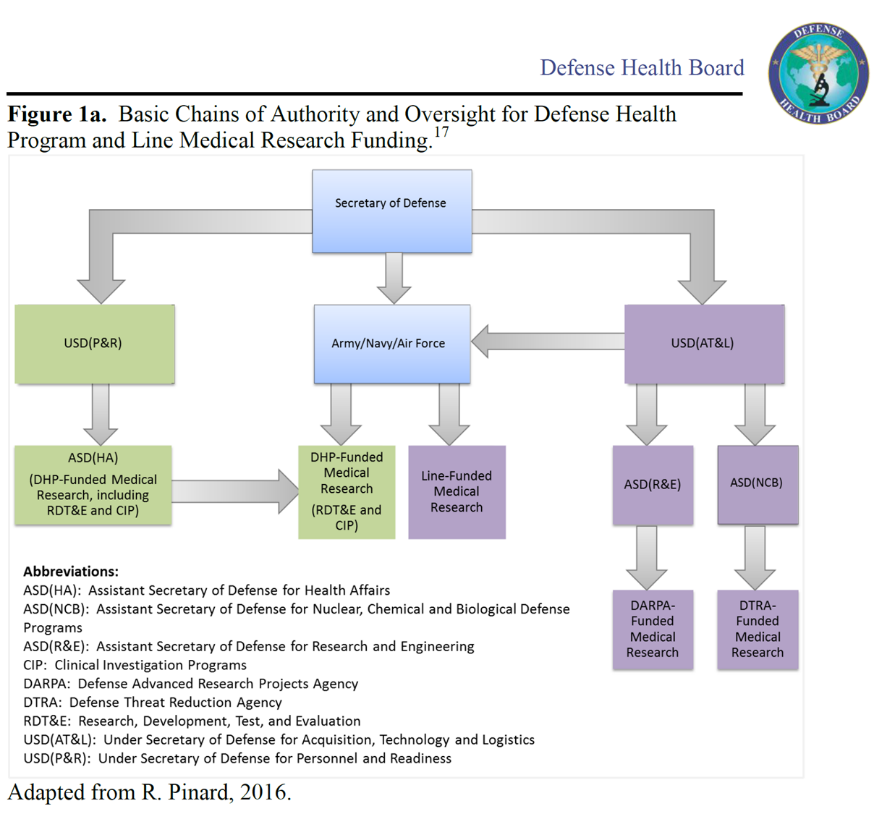 D and extramural sources as there are numerous authorities and oversight processes for DHP and Line medical research funding (figure is from the Improving DHP report).
D and extramural sources as there are numerous authorities and oversight processes for DHP and Line medical research funding (figure is from the Improving DHP report).
Historically, the annual funding for U.S. Army medical research processes has been proportionally higher than U.S. Air Force and U.S. Navy. The U.S. Army has also done a great job of providing support for CIP researchers within MTFs by implementing Department of Clinical Investigation (DCI) facilities on site (e.g., DCIs at Brooke/San Antonio Military Medical Center, Eisenhower, Madigan, Tripler, Womack, and Walter Reed National Military Medical Center). Military healthcare providers typically take on clinical research in addition to their clinical and operational duties so their extra work on behalf of our warfighters is greatly appreciated.
Here we will describe the U.S. Army Biomedical and Human Systems Communities of Interest (COI). I am continually amazed at the breadth and diversity of the expertise, resources, and tools available to industry and academic collaborators when teaming with these SMEs in support of and equipping our military personnel, Veterans, and their families. Please keep in mind as you read this that Biomedical and Human Systems are only two of many forward leaning U.S. Army COIs. The DoD Science and Technology (S&T) Communities of Interest (COI) were established in 2009 as a mechanism to encourage multi-agency coordination and collaboration in cross-cutting technology focus areas with broad multiple-Component Investment. Each COI, as defined by Reliance 21, is led by a steering group of senior technical leaders with common technology interests and consist of SMEs from across the DoD. The COI technology areas do not change substantially from year to year. These groups cover 17 technical areas, including Biomedical and Human Systems COIs.
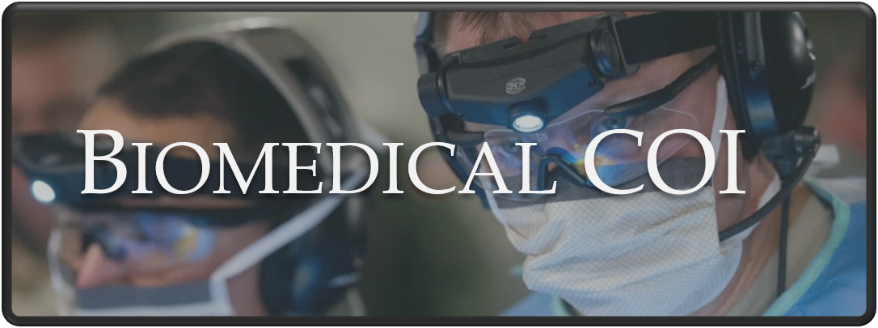 According to the Defense Innovation Marketplace, the Biomedical COI, or Armed Services Biomedical Research Evaluation and Management (ASBREM) COI, promotes the planning and execution of Warfigher Performance and Health Protection initiatives around the globe. It is also meant to coordinate the execution of Research and Engineering and Health Affairs funding for Biomedical Science and Technology and Advanced Development. Army research directorates involved in the Biomedical COI include the Engineer Research and Development Center (ERDC), U.S. Army Aeromedical Research Laboratory (USAARL), Institute of Surgical Research (USAISR), Medical Research Institute of Chemical Defense (USAMRICD), Medical Research Institute of Infectious Diseases (USAMRIID), Research Institute of Environmental Medicine (USARIEM), and the Walter Reed Institute of Research (WRAIR).
According to the Defense Innovation Marketplace, the Biomedical COI, or Armed Services Biomedical Research Evaluation and Management (ASBREM) COI, promotes the planning and execution of Warfigher Performance and Health Protection initiatives around the globe. It is also meant to coordinate the execution of Research and Engineering and Health Affairs funding for Biomedical Science and Technology and Advanced Development. Army research directorates involved in the Biomedical COI include the Engineer Research and Development Center (ERDC), U.S. Army Aeromedical Research Laboratory (USAARL), Institute of Surgical Research (USAISR), Medical Research Institute of Chemical Defense (USAMRICD), Medical Research Institute of Infectious Diseases (USAMRIID), Research Institute of Environmental Medicine (USARIEM), and the Walter Reed Institute of Research (WRAIR).
The Biomedical COI has seven technical sub-groups:
1. Biomedical Informatics/Health Information Systems & Technology (BI/HIST)
Medical Simulation and Training Research:
• Combat Casualty Training
• Medical Readiness Training
• Health Focused Education
• Tools for Medical Education
Health Informatics Research:
• Theater/Operation Medicine
• Health Services and Population Health
• Health Operations Resourcing and Enterprise Infrastructure Management
2. Military Infectious Diseases (MID)
Plans, coordinates, and oversees infectious disease research and development leading to effective, improved means of protecting the Warfighter against naturally occurring, known, predictable, endemic disease threats.
3. Military Operational Medicine (MOM)
• Psychological Health and Resilience
• Injury Prevention and Reduction
• Environmental Health and Protection
• Physiological Health and Performance
4. Combat Casualty Care (CCC)
• Traumatic Brain Injury (TBI) and Hemorrhage Control
• Resuscitation and Blood Products
• Enroute Care and Forward Surgical Critical Care
5. Medical Radiological Defense (MRD)
Current principal focus is research and development of medical countermeasures to prevent or treat the effects of Acute Radiation Syndrome (ARS).
6. Clinical and Rehabilitative Medicine (CRM)
• Neuromusculoskeletal Injury (prosthetics, assistive devices, and rehabilitation and reintegration strategies)
• Pain (battlefield, acute and chronic)
• Regenerative Medicine
• Sensory Systems (vision, hearing, and balance)
7. Medical Chem-Bio Defense (MCBD)
Plans, coordinates, and oversees research, development, testing, and evaluation of vaccines, therapeutics, and diagnostics against chemical and biological threats.
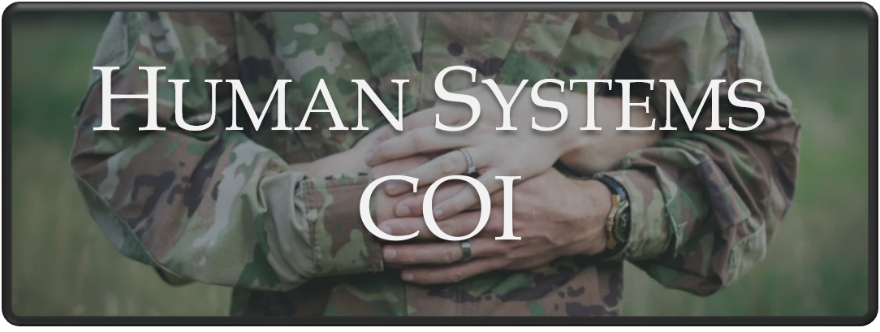 The Human Systems COI aims to develop and deliver new human-centered technologies to quantify mission effectiveness and to select, train, design, protect, and operate for measurably improved mission effectiveness. In the U.S. Army, several components of the Research, Development and Engineering Command (RDECOM) are actively involved in the Human Systems COI. These include the Armament Research, Development and Engineering (RD&E) Center (ARDEC), Aviation and Missile RD&E Center (AMRDEC), Communications Electronics RD&E Center (CERDEC), Edgewood Chemical Biological Center (ECBC), Natick Soldier RD&E Center (NSRDEC), and the Tank Automotive RD&E Center (TARDEC). Other Army labs involved in the Human Systems COI are the Engineer Research and Development Center (ERDC) and the Army Research Institute for the Behavioral and Social Sciences (ARI).
The Human Systems COI aims to develop and deliver new human-centered technologies to quantify mission effectiveness and to select, train, design, protect, and operate for measurably improved mission effectiveness. In the U.S. Army, several components of the Research, Development and Engineering Command (RDECOM) are actively involved in the Human Systems COI. These include the Armament Research, Development and Engineering (RD&E) Center (ARDEC), Aviation and Missile RD&E Center (AMRDEC), Communications Electronics RD&E Center (CERDEC), Edgewood Chemical Biological Center (ECBC), Natick Soldier RD&E Center (NSRDEC), and the Tank Automotive RD&E Center (TARDEC). Other Army labs involved in the Human Systems COI are the Engineer Research and Development Center (ERDC) and the Army Research Institute for the Behavioral and Social Sciences (ARI).
The Human Systems COI has four technical sub-areas:
1. Personalized Assessment, Education, and Training
• Secure, Large-Scale Live, Virtual, and Constructive (LVC) Joint/Coalition Training Environments
• Individually Tailored Training and Education
• Persistent, Interoperable Learning “Ecosystem”
• Optimal Cross-Career Talent Assessment and Management
2. Protection, Sustainment, and Warfighter Performance
• Real-Time Monitoring of Warfighter Performance with Individualized Optimization
• Warfighter Off-loading Technologies and Augmentation Devices/Exoskeletons
3. Human Aspects of Operations in Military Environments
• Mastering the Information Environment
• Mitigate Threats by Forecasting Indicators and Warnings of Human Intent
4. System Interfaces & Cognitive Processes
• Intuitive Human-Machine Interaction with Natural Interfaces
• Seamless Teaming of Autonomous and Manned Systems
• Cognitive Status Assessment with Adaptive Aiding
U.S. Army Research Personnel
The U.S. Army Medical Research Command (USAMRMC) has approximately 7,100 personnel supporting the six medical research laboratories: the U.S. Army Aeromedical Research Laboratory (USAARL), Institute of Surgical Research (USAISR), Medical Research Institute of Chemical Defense (USAMRICD), Medical Research Institute of Infectious Diseases (USAMRIID), Research Institute of Environmental Medicine (USARIEM), and the Walter Reed Army Institute of Research (WRAIR). It is also is responsible for overseeing the Congressionally Directed Medical Research Programs (CDMRP). As part of the Biomedical COI, USAMRMC personnel are involved in Biomedical Informatics/Health Information Systems & Technology (USAARL, USARIEM, WRAIR); Military Infectious Diseases (USAMRIID, WRAIR); Military Operational Medicine (USARIEM, WRAIR); Combat Casualty Care (USAISR); Clinical and Rehabilitative Medicine (USAISR); and Medical Chem-Bio Defense (USAMRICD).
The U.S. Army’s Engineer Research and Development Center (ERDC) has more than 1,000 scientists and engineers (S&E) involved in both the Biomedical and Human Systems COIs across of seven laboratories: the Coastal and Hydraulics Laboratory (CHL), Environmental Laboratory (EL), Geotechnical and Structures Laboratory (GSL), Information Technology Laboratory (ITL), Geospatial Research Laboratory (GRL), Construction Engineering Research Laboratory (CERL), and Cold Regions Research and Engineering Laboratory (CRREL). Research personnel with the ERDC are involved in the Military Infectious Diseases and Medical Chem-Bio Defense Biomedical technical subgroups, as well as the Human Aspects of Operations in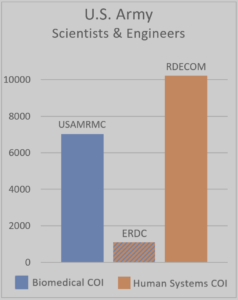 Military Environments technical subgroups of the Human Systems.
Military Environments technical subgroups of the Human Systems.
The U.S. Army Research, Development and Engineering (RD&E) Command (RDECOM) employs over 10,000 S&E across seven major research centers: The Army Research Laboratory (ARL) has over 1,300 S&E; the Armament RD&E Center (ARDEC) and the Aviation and Missile RD&E Center (AMRDEC) have more than 2,500 S&E each; the Communication Electronics RD&E Center (CERDEC) has approximately 1,620 S&E; the Edgewood Chemical Biological Center (ECBC) has about 674 S&E; the Natick Soldier RD&E Center (NSRDEC) has 386 S&E; and the Tank Automotive RD&E Center (TARDEC) has approximately 1,086 S&E. As part of the Human Systems COI, the RDECOM laboratories conduct research in Personalized Assessment, Education, and Training (ECBC, TARDEC); Protection, Sustainment, and Warfighter Performance (ECBC, NSRDEC, TARDEC); Human Aspects of Operations in Military Environments (ARDEC, CERDEC, NSRDEC, TARDEC); and System Interfaces & Cognitive Processing (AMRDEC, CERDEC, ECBC, NSRDEC, TARDEC). In addition, the Army Research Institute for the Behavioral and Social Sciences (ARI) focuses on Personalized Assessment, Education, and Training as well as Human Aspects of Operations in Military Environments.
What Now?
If you would like more information on how Tier Seven can assist your SBC with identifying, connecting and collaborating via CRADAs with other DoD researchers, please contact us. If your SBC has a dual-use innovative technology that connect with Tier Seven 2017 technology focus areas, we may be able to assist by:
-
- Determining whether your technology is a capability interest to the DoD;
- Identifying non-dilutive funding opportunities that are available for your SBC to apply;
- Identifying DoD subject matter experts for collaboration via CRADAs;
- Prioritizing the non-dilutive funding application to pursue near-term, and most importantly why; and
- Assisting with DoD-specific narrative/terminology development for your submission package.
Tier Seven technology focus areas for 2018 will be therapeutics (vaccines, small molecules, monoclonal antibodies, compound candidates), orthopedic trauma tech, and sensors/IoT.
14 Nov
2017
